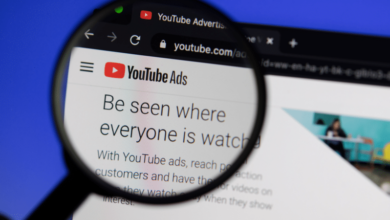How to build a future-ready SEO strategy

Crafting an SEO strategy requires more than just a focus on the present. To succeed, we must anticipate future changes and adapt accordingly.
In this article, we’ll discuss:
- The developing changes to the SEO industry.
- What those changes mean for our SEO strategies.
- How we can address and grow with those changes.
Note: When future-proofing an SEO strategy, consider that most businesses plan in 5-7 year horizons, not 20-30 years. While long-term goals matter, immediate relevance lies in shorter timeframes.
Strategy creation: Assumptions
Within this article, I’m making a few assumptions about how you created your strategy.
I recognize best practices end up being occasionally compromised for one reason or another, so I’ll lay these assumptions out for you:
- The SEO strategy created has already been lined up to the 1-3 year business plan and goals.
- You have a measurement plan in place for your tactical buckets.
- You know what the 5-7 year goals are for the business. (e.g., You’re at Netflix and know they want to dominate the video game space in seven years.)
If you have to compromise on any of these elements, address this before focusing on future-proofing your strategy. You must know the kind of future your business wants to walk into – and have a way to measure it – before getting too far down the road.
If you’re compromising on measurement and are unsure when or how to get the perfect measure, find a solution that enables you to monitor progress and value effectively.
The first port of call I’d recommend would be to speak to your finance team. See how they’re measuring similar activities in channels that aren’t typically as directly measurable, like TV or radio and other forms of traditional media.
If they don’t have an easily transferable metric, a few other ways to approach it include:
- Getting a “faith-based” number from finance: If they don’t have a calculation you can use, they may just have a value they assign to that channel because someone somewhere made a calculation 20 years ago, and it’s now considered a gold standard internally.
- Use a relative value: Each action on the website has a relative value to each other – signing up for a newsletter probably isn’t as valuable as a sale, etc. Put your metrics in that list, speak to someone with decision-making power, and ask them where your goals sit in the hierarchy of value.
- Use a default value of $1 for everything: This is the worst-case scenario. The goal is to elicit conversation when you share this number and people ask where you got it from.
If you’re having trouble even getting tracking for those goals implemented, I’d follow a similar process to at least start putting a number against it.
Whether that’s an assumed conversion rate from lead to sale or an estimated number of organic newsletter signups based on the current channel split, you will find a way to put some easily explainable number against a goal that will at least start a conversation. This will hopefully lead to a conversation around how to measure it more precisely.
For a more in-depth conversation about goal tracking, read this article by Avinash Kaushik. (Here, he’s specifically talking about measuring offline conversions, but it still applies when you’re having trouble getting visibility around value or perceived value.)
As we are moving into a more fractured world of measurement, I would also make sure you clearly document your sources and assumptions. As we’ll discuss later, measurement for SEO will be even more obtuse now than ever. One of those black boxes of measurement will probably be Search Generative Experience (SGE).
Generative search, surfaces and SEO
There are a few ways I think about generative search:
These ways of thinking about generative search move beyond standard website optimization into brand building and collaboration with other marketing channels.
So, what does this mean for you as an SEO professional?
Get social. If you haven’t already, your job and the success of your work and strategy are starting to depend on much more than the development (or engineering) and content teams.
Intrinsically, Perspectives (now Forums) within SGE is social media, but we know Google is pulling from much more than that.
So you want to start talking to other teams, particularly social. Honestly, I’d start learning about how they’re optimizing the content on those platforms and if there’s an angle or level of expertise you can share.
It’s also time for a perspective shift as a professional: it’s not just about the website anymore. It’s about your brand’s content, anywhere it happens to be published.
Measurement
I don’t have a perfect solution for measurement now or in the future. However, I anticipate measurement will become increasingly nebulous and extrapolated.
We already know that SGE and other Google surfaces (News, Discover, etc.) are poorly and incorrectly measured by default through source/medium attribution in Google Analytics, often being attributed as (direct).
As those surfaces fracture further and SGE develops, the measurement will likely continue to become less accurate.
Emphasis will likely be placed on proof of concepts, where we establish a connection between actions and outcomes, followed by larger programs that are inherently more challenging to measure. Or it’ll be about market comparisons to justify work being done rather than, “Well, putting keyword A at position B will give us X dollars of incremental revenue.”
It will be even more important that you, as an SEO professional, ladder up your recommendations to the greater strategy of the business rather than excluding those from your thought process because it will probably be more difficult to line up a specific revenue amount to your organic efforts and get approval through brute force.
Get the daily newsletter search marketers rely on.
Education
The future of measurement is one of the reasons why it’s important, if you’ve not already, to build an ongoing training or education program into your business.
Even if it’s a one-person shop, give yourself time to set aside and learn from some great folks – alongside websites like this, there are some fantastic newsletters out there that will pull together the updates in SEO for you.
If you have stakeholders, it’s even more important that they understand both the foundations of SEO and the way the sands are shifting and what the future will probably look like and why.
Find the metaphors relevant to your audience. Give examples and case studies from your own websites, if you can get them, and if not, use examples from within your industry. From your competitors. Get your stakeholders to buy into the fact that, in many ways, digital media will start looking a lot more like traditional media rather than digital media measurement as we’ve known it for the last decade.
You also want to continue educating yourself on SEO and how the business works. Where do you need to get approvals? At what point is an initiative considered break-even or impactful?
Dig deeper: How to use SEO education for stakeholder management
Processes and approval gates
What’s a strategy if you can’t execute on it?
To future-proof your strategic efforts, and likely as a part of your education efforts, you want to make sure that SEO is included in any and all relevant processes. This might include:
- Codebase quality assurance
- Brand campaign go-to-market
- Re-branding
- Re-platforming
- New product launch
- Annual high-sales periods like Black Friday
Again, this will mean going out and talking to folks, so your days might become a balancing act of getting stuff done and laying the groundwork to get stuff done in the future.
It also means you’ll likely want to (or have to) compromise on smaller best practices that may not matter as much in your industry, like chasing a perfect score on Core Web Vitals or rewriting your metadata.
While none of us have a crystal ball to see what, exactly, SEO will look like in a decade (except maybe Michael King), when you take your strategy and then build a framework of training, processes and collaboration around it, it’s more likely to be able to stand the test of time. Bend rather than break as market and technology landscapes shift around your strategy.
Opinions expressed in this article are those of the guest author and not necessarily Search Engine Land. Staff authors are listed here.





